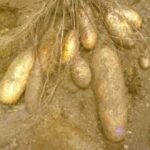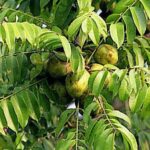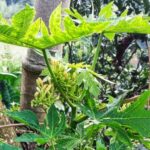Many African trees extrude edible gums and resin. Notable Vachellia ssp. and Senegalia ssp. (old name: Acacias) are known for their edible gums. Khoi-sani people collect and eat whatever edible gums and resins they find on the go. In our case, it was the resin of Wild Syringas (Burkea africana).

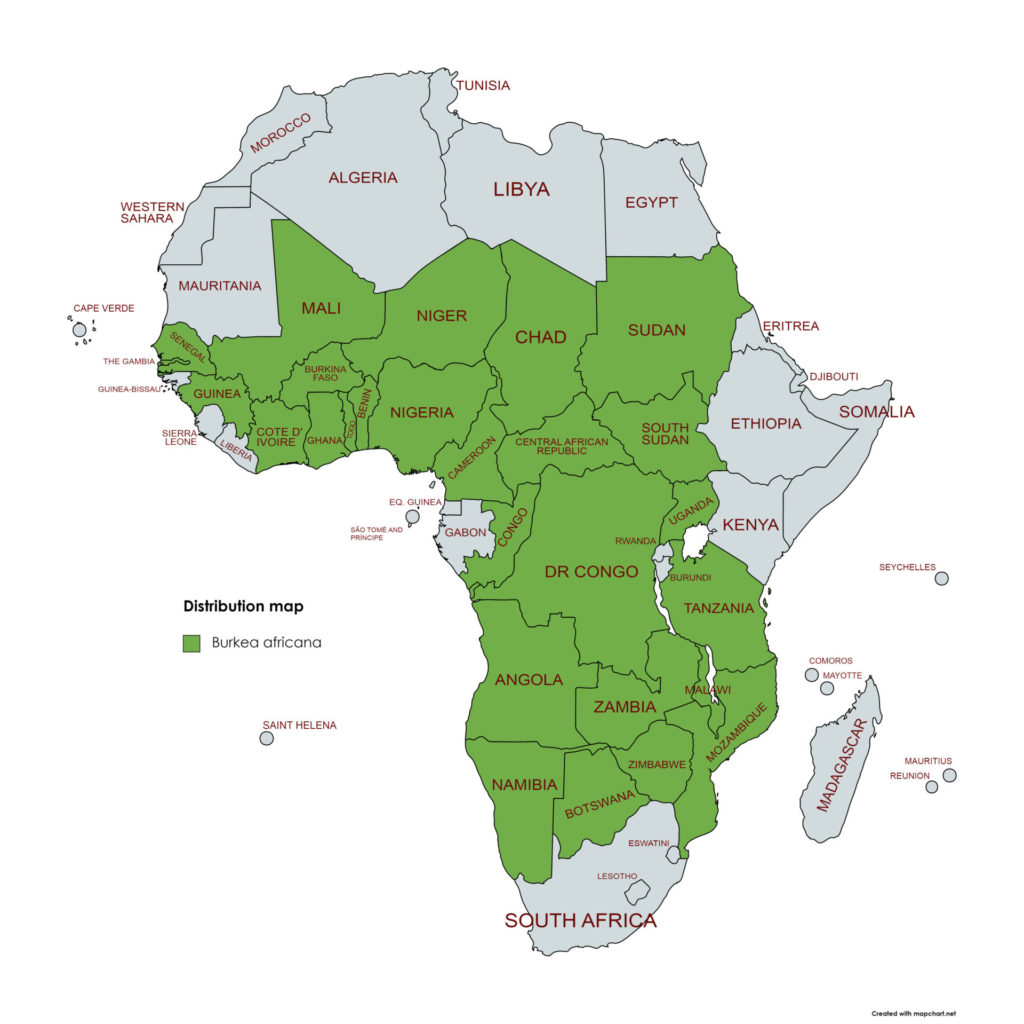
Distribution of Wild Syringa is widespread in tropical- and subtropical Africa and mainly occurs between the Tropics of Cancer and Capricorn.
The outer bark contained the amount of resin in two spots, as can be seen in the photos below. The two old women chewed it without offering something to the men. Resin is a food of the Khoi-san people just for the collectors, although all the other roots, fruits, and nuts we found were shared amongst all of us on the spot.
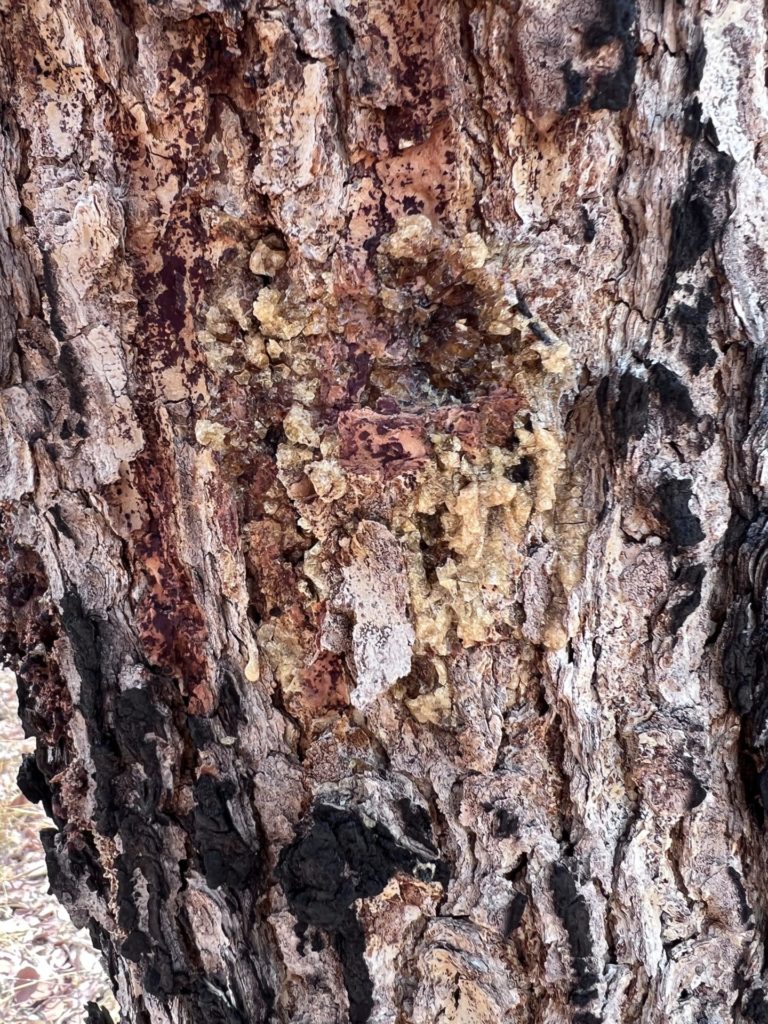

Burkea africana resin’s taste is pleasantly mild and resembles that of roasted sweet chestnuts. It is neither sticky (like pine resin) nor too brittle—just the right taste and texture for enjoyment.

The calorific value of Burkea africana resin is not known yet, but pine resins, for example, have a CV of over 38 MJ/kg, which is a medium-high value. Wild Syringa resin will have a higher CV due to the sugars it contains. Fungi, for comparison, got around 17 MJ/kg.
Lessons learned about Wild Syringa edible tree resin:
- Tree resin is used as a kind of snack food for wild food collectors
- Burkea africana resin tastes pleasantly like sweet chestnut
- The calorific value of tree resins is high enough to pay off the extra energy spent looking for it
.



